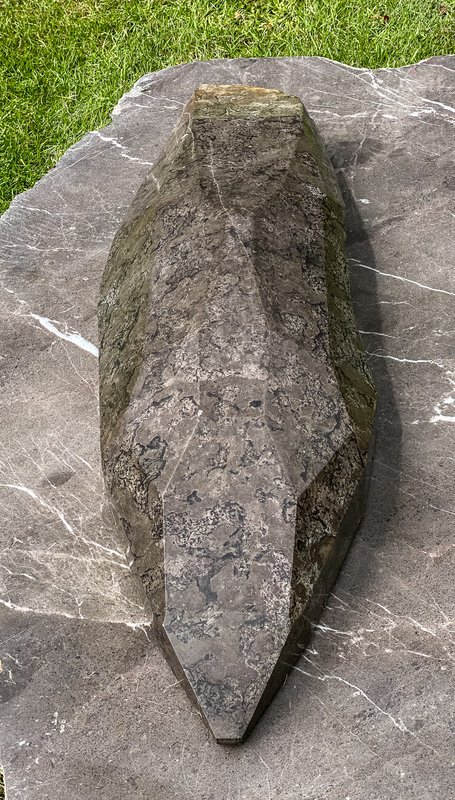


The Second Seeker
BLOW, Michael
Material(s): carboniferous limestone from the mendips
Current Location: unkown
Status: released from Broomhill
The Second Seeker
BLOW, Michael
Material(s): carboniferous limestone from the mendips
Current Location: unkown
Status: released from Broomhill
Blow was fascinated with a yacht he saw in a Scottish harbour when he was eleven. He translates this into stone, noting a profound connection between journeys and a material older than life itself: stone. This journey and geology are both represented as one in the seeker we see crawling across the lawn. “This is a piece that evokes the timelessness of the natural world and its underlying geometry. I see it as a creature scuttling across the tundra of ancient geology.” The stone itself is multifaceted and polished to shimmer like light shining down from the ocean surface; it looks like the shadow of the hull of a boat or the silhouette of an unidentifiable animal on the sea bed.
Our Planting Scheme
This sculpture has been partnered with some of the few possible examples of living fossils: Pinus mugo; physalis franchetii ‘gigantea’; and magnolia stellata. Cone bearing plants have been seen in fossils dating back to the dinosaurs; Physalis franchetii ‘gigantea’ represents a fossilised fruit from the physalis found by scientists that was estimated to be 52 million years old. One of the first fossilised flowers, dated to around 140 million years ago, was believed to be from the magnolia family.